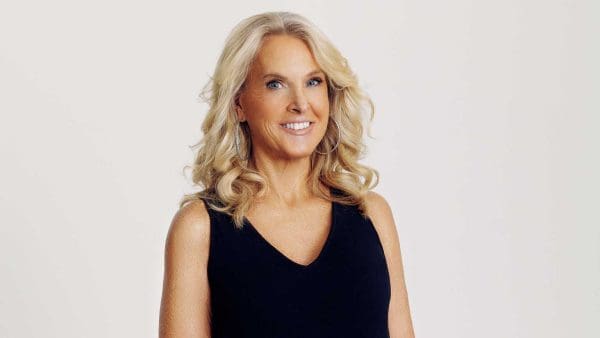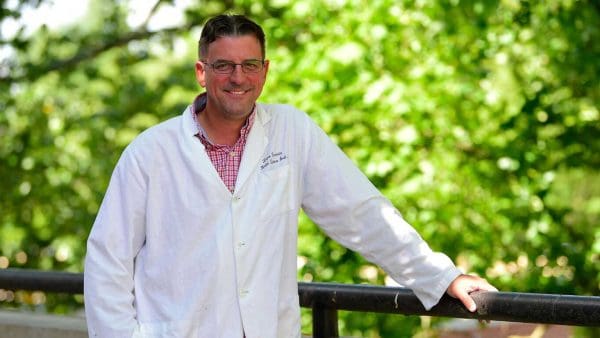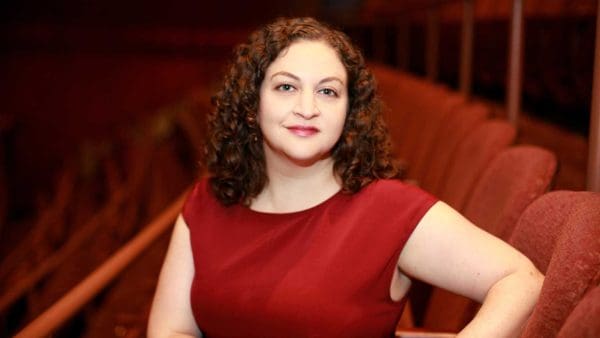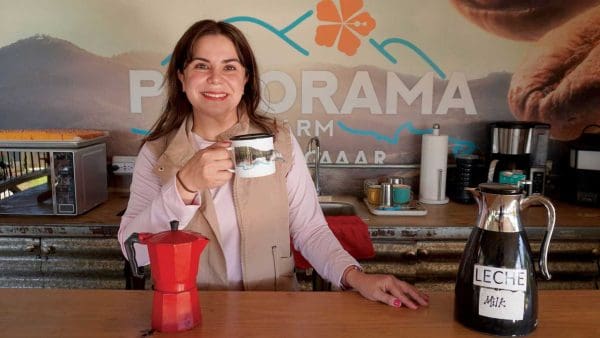
A ceramic bovine vessel from the Chancay culture, situated in modern-day Peru, dating between 1000 and 1450 CE.
When art historian Irene Kabala ’01 PhD leaves her classroom at the end of the workday, she may leave her job but she doesn’t leave art. Her home holds what she estimates is between 1,000 and 1,500 artifacts and works of art. Kabala, an associate professor in the Department of Art and Design at the Indiana University of Pennsylvania (IUP), has been collecting art for decades.
“Collecting is personal,” she says, “and so I buy art that is personal to me. It inspires me to keep learning and it keeps me curious.”
Building a collection
Kabala’s curiosity has taken her all over the world—Eastern Europe, Italy, Indonesia, and Nepal, to name just a few places—in the quest to add to her collection. In addition to purchasing and selling art via her online store, Kabala also pays attention to auctions and estate sales. In 2020, the museum at IUP featured pieces from Kabala’s collection in an exhibition titled “Dr. Kabala’s Cabinet of Wonders.”
Kabala’s scholarly area of expertise—sharpened as a doctoral student at Johns Hopkins—is medieval and early Renaissance art. “At Hopkins, I learned how to gather information from various works of art to expand my knowledge,” she says.
Art is one of the great expressions of humanity.”
—Irene Kabala
Kabala is particularly drawn to masks, and her collection has many, along with sculptures and paintings. The collection spans about 1,000 years, with the oldest piece dating back to 1040 (a Spanish, Romanesque wood carving of Christ or a crowned saint), and more modern pieces including ones by Andy Warhol and Jean-Michel Basquiat.
Video highlights from 2021 exhibit:
Video courtesy of The University Museum at Indiana University of Pennsylvania
Teaching art appreciation
When she is not collecting, Kabala is doing another thing she loves—teaching. She says she knows that some of the students who take her classes are only there to fill a humanities requirement. She views that as a challenge.
“Art and other humanities studies are closely tied to the important questions of what it means to be human,” says Kabala. “Art is one of the great expressions of humanity.”
One way Kabala inspires interest among non-majors in art and art history is to bring artworks from her collection into the classroom for students to experience firsthand.
“This is a rural area with many first-generation college students, and I want them to be able to access real artwork,” she says. “I try to teach in terms of themes, and I’ll bring in pieces from the collection that speak to whatever theme we are exploring.”




